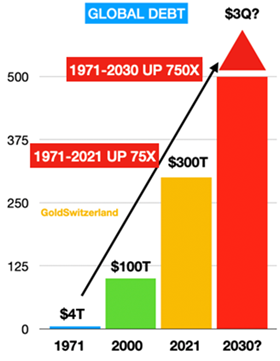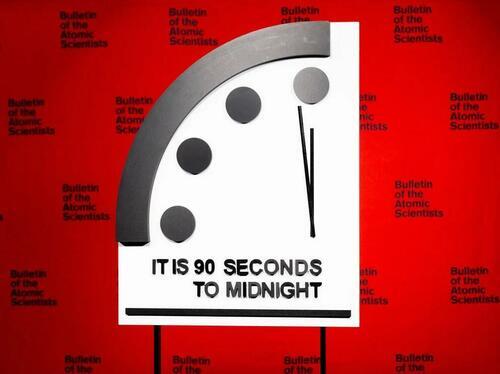Steve Bull's Blog, page 132
January 31, 2023
The great energy descent – Part 1: Can renewables replace fossil fuels?
In summary, fossil fuels, as finite resources, will peak and decline in the next decades. However, they are extremely difficult to replace, so it’s unlikely that alternatives can replace them at the scale required. You can check the short version of the post.
This is part 1 of 3 different EA forum posts talking about energy depletion as an important topic that will shape the future:
1 – Decline of fossil fuels and why alternative energy sources will probably not scale up
2 – Consequences : The role of investment, impact on economic growth and systemic risks. Plus, what that means for EA causes.
3 – What we can do , what we can’t do, and why few people really anticipate this problem
Note: The original post was too long, so I divided it in 3 to avoid that (energy limits, consequences, what to do). The scope here is very broad, so the posts will only contain the overall reasoning and main arguments. If you are doubtful about a specific point, I wrote detailed sections that I added to an Additional Document (it’s 140 pages, so I think I have covered the main counterarguments here). You can engage in comments in this Doc. For instance, you can read “Have other EAs addressed this topic?” in this section .
A quick introduction on energy
It’s often hard to see the importance of energy, so here’s a quick intro on it. Energy, simply put, defines the capacity to do work in a system (see here for more details). We need it to do basically anything. As Richard Heinberg puts it in his book Power: “if you want to understand any ecosystem or human society, a good rule of thumb is to follow the energy.”…
…click on the above link to read the rest…
January 30, 2023
Here’s How “Prosperity” Ends: Global Bubbles Are Popping
So here we are: the global credit-asset bubbles are popping, and the illusory “prosperity” generated by the bubbles is about to tumble off a cliff.
There are two kinds of prosperity, one fake, one real. Bogus “prosperity” depends on credit-asset bubbles inflating, magically creating “wealth” not from labor, production or improving productivity, but from the value of assets soaring as bubbles inflate.
This bubble-generated “wealth” then fuels a vast expansion of credit and consumption as assets soaring in value increases the collateral available to borrow against, and the occasional sale of soaring assets generate capital gains, stock options, etc. which then fund sharply higher consumption.
When the value of a modest home skyrockets from $200,000 to $1,000,000 in a few years, that $800,000 in gain was not the result of any improvement in utility. The house provides the same shelter it did when it was worth 20% of its current value. The $800,000 is gain is the result of the abundance of low-cost credit and the global search for a yield above zero.
Eventually, this vast expansion of “money” chasing yields and seeking places to park all the excess cash trickles into the real economy and the result is inflationary. Consider how soaring home prices affect rents.
When an investor bought the modest home for $200,000, the costs of ownership were low due to the costs being linked to the value: the property tax, insurance and mortgage were all based on the valuation. (The costs of maintenance were unrelated to valuation, of course, being based on the age and quality of construction.) Let’s say the modest house rents for $1,500 per month.
…click on the above link to read the rest…
How the modern fantasy of an eternal civilization warps our view of technology
What historians call the Golden Age of Greece—which ran from about 500 to 300 BC—spawned the foundational Western philosophers Plato and Aristotle; mathematicians such as Euclid whose geometry is still taught in schools today; classical Greek dramatists such as Aeschylus, Sophocles, and Euripides, whose plays are performed even now; an architecture so grand that it has been imitated in our own time, especially in government buildings; and the practice of democracy, a form of governance that would go into eclipse for over 2,000 years until the American and French revolutions.
What most people don’t know is that the ancient Greeks who lived through that era did not think of themselves as being in a golden age. Instead, they thought of their society as a much degraded version of the heroic age that preceded it, an age described in such works as Homer’s Illiad and Odyssey and Hesiod’s Works and Days. How utterly difficult it is for most people living today to imagine a society whose members believed that the future would only bring further degradation and decline perhaps until civilization itself disappeared. History was to them cyclical with dark and golden ages—golden ages that start out with great vigor and hope and then grind down to dark eras that destroy the progress of the past.
Today, most modern people think of time as linear and history as merely a story of the gradual and now rapid rise of technological, social, political and cultural progress. Since time is linear, the trajectory is always forward and expected to be up. We humans will never again fall prey to the civilization-ending mistakes of the past. Our technology has no equal. Humans have decoupled from the limits nature previously imposed on them…
…click on the above link to read the rest…
Escobar: The ‘Doomsday Clock’ Is Speeding Up
The Doomsday Clock, set by the US-based magazine Bulletin of the Atomic Scientists, has been moved to 90 seconds to midnight…
That’s the closest ever to total nuclear doom, the global catastrophe.
The Clock had been set at 100 seconds since 2020. The Bulletin’s Science and Security Board and a group of sponsors – which includes 10 Nobel laureates – have focused on “Russia’s war on Ukraine” (their terminology) as the main reason.
Yet they did not bother to explain non-stop American rhetoric (the US is the only nation that adopts “first strike” in a nuclear confrontation) and the fact that this is a US proxy war against Russia with Ukraine used as cannon fodder.
The Bulletin also attributes malignant designs to China, Iran and North Korea, while mentioning, only in passing, that “the last remaining nuclear weapons treaty between Russia and the United States, New START, stands in jeopardy”.
“Unless the two parties resume negotiations and find a basis for further reductions, the treaty will expire in February 2026.”
As it stands, the prospects of a US-Russia negotiation on New START are less than zero.
Now cue to Russian Foreign Minister Sergei Lavrov making it very clear that war against Russia is not hybrid anymore, it’s “almost” real.
“Almost” in fact means “90 seconds.”
So why is this all happening?
The Mother of All Intel Failures
Former British diplomat Alastair Crooke has concisely explained how Russian resilience – much in the spirit of Iranian resilience past four decades – completely smashed the assumptions of Anglo-American intelligence.
Talk about the Mother of All Intel Failures – in fact even more astonishing than the non-existent Iraqi WMDs (in the run-up to Shock and Awe in 2003, anyone with a brain knew Baghdad had discontinued its weapons program already in the 1990s.)
…click on the above link to read the rest…
The New York Times is Orwell’s Ministry of Truth
As today dawned, I was looking out the window into the cold grayness with small patches of snow littering the frozen ground. As light snow began to fall, I felt a deep mourning in my soul as a memory came to me of another snowy day in 1972 when I awoke to news of Richard Nixon’s savage Christmas bombing of North Vietnam with more than a hundred B-52 bombers, in wave after wave, dropping death and destruction on Hanoi and other parts of North Vietnam.
I thought of the war the United States is now waging against Russia via Ukraine and how, as during the U.S. war against Vietnam, few Americans seem to care until it becomes too late. It depressed me.
Soon after I was greeted by an editorial from The New York Times’ Editorial Board, “A Brutal New Phase of the War in Ukraine.” It is a piece of propaganda so obvious that only those desperate to believe blatant lies would not fall down laughing. Yet it is no laughing matter, for The N.Y. Times is advocating for a wider war, more lethal weapons for Ukraine, and escalation of the fighting that risks nuclear war. So their title is apt because they are promoting the brutality. This angered me.
The Times’ Editorial Board tells us that President Putin, like Hitler, is mad. “Like the last European war, this one is mostly one man’s madness.” Russia and Putin are “cruel”; are conducting a “regular horror” with missile strikes against civilian targets; are “desperate”; are pursuing Putin’s “delusions”; are waging a “terrible and useless war”; are “committing atrocities”; are responsible for “murder, rape and pillaging,” etc.
…click on the above link to read the rest…
January 29, 2023
We’re Coming Closer to Limits of Adaptation
This Time It’s Different
Neither we nor our allies are prepared to fight all-out war with Russia, regionally or globally.
 An image of Russian President Vladimir Putin is displayed as U.S. President Joe Biden speaks about gas prices in the South Court Auditorium at the White House campus on June 22, 2022. (Drew Angerer/Getty Images)
An image of Russian President Vladimir Putin is displayed as U.S. President Joe Biden speaks about gas prices in the South Court Auditorium at the White House campus on June 22, 2022. (Drew Angerer/Getty Images)Until it decided to confront Moscow with an existential military threat in Ukraine, Washington confined the use of American military power to conflicts that Americans could afford to lose, wars with weak opponents in the developing world from Saigon to Baghdad that did not present an existential threat to U.S. forces or American territory. This time—a proxy war with Russia—is different.
Contrary to early Beltway hopes and expectations, Russia neither collapsed internally nor capitulated to the collective West’s demands for regime change in Moscow. Washington underestimated Russia’s societal cohesion, its latent military potential, and its relative immunity to Western economic sanctions.
As a result, Washington’s proxy war against Russia is failing. U.S. Defense Secretary Lloyd Austin was unusually candid about the situation in Ukraine when he told the allies in Germany at Ramstein Air Base on January 20, “We have a window of opportunity here, between now and the spring,” admitting, “That’s not a long time.”
Alexei Arestovich, President Zelensky’s recently fired advisor and unofficial “Spinmeister,” was more direct. He expressed his own doubts that Ukraine can win its war with Russia and he now questions whether Ukraine will even survive the war. Ukrainian losses—at least 150,000 dead including 35,000 missing in action and presumed dead—have fatally weakened Ukrainian forces resulting in a fragile Ukrainian defensive posture that will likely shatter under the crushing weight of attacking Russian forces in the next few weeks.
…click on the above link to read the rest…
As West, Debt & Stocks Implode, East Gold & Oil Will Explode

“The risk of over-tightening by the European Central Bank is nothing less than catastrophic” says Prof Kenneth Rogoff .
At Davos he also said: “Italy is extremely vulnerable. But this could pop anywhere. Global debt has gone up massively since the pandemic: public debt, corporate debt, everything.”
Rogoff believes that it is a miracle that the world averted a financial crisis in 2022, but the odds of a major accident are shortening as the delayed effects of past tightening feed through.
As Rogoff said: “We were very fortunate that we didn’t have a global systemic event in 2022, and we can count our blessings for that, but rates are still going higher and the risk keeps rising.”
But lurking in the murkiness is also the global financial assets/liabilities which is almost $500 trillion including the shadow banking system at 46% of the total. The shadow banking sector includes pension funds, hedge funds and other financial institutions which are largely unregulated.

Shadow banking is not subject to the normal mark-to-market rules. Thus no one knows what the real position or losses are. This means that central banks are in the dark when it comes to evaluation of the real risks of the system.
Clearly, I am not the only one harping on about the catastrophic global debt/liability situation.
And no one knows the extent of total global derivatives. But if they have grown in line with debt and also with the shadow banking system, they could easily be in excess of $3 quadrillion.

Cultures don’t die overnight, but the US has been in decline since at least the Vietnam war in the 1960s. Interestingly, the US has not had a real Budget surplus since the early 1930s with a handful of years of exception.
…click on the above link to read the rest…
The Race to the Bottom Accelerates
When competence, transparency and accountability are all punished, the Race to the Bottom accelerates.
Race to the Bottom describes the process of competitive devaluation, where value is gutted to remain competitive with those who are grabbing market share by stripping out quality, value, durability, transparency, accountability and competence.
We see the global Race to the Bottom in everyday products: the quality of goods has plummeted as manufacturers compete to reduce costs to maintain high profit margins by stripping out the quality and durability of components. We see it in shrinkflation, where the cereal box contains less cereal while the price ratchets higher.
We see it when cereals that once contained no sugar are now sickly-sweet because the manufacturer is losing market share to less healthy sugar-bomb cereals.
We see it in healthcare where costs have been so ruthlessly stripped out to boost profits that it takes months to get an appointment and overworked caregivers no longer have the “luxury” of providing the care they were trained to provide. Routine procedures and hospital stays now carry pricetags equal to four years college tuition or a modest house.
The Race to the Bottom isn’t limited to goods and services. Consider the bedrock of the social order, civility. Civility in discourse is now rarer than sightings of UFOs / UAPs.
In politics, scoring cheap points while ignoring the nation’s social decay and unsustainable bubble economy is another example of the Race to the Bottom. Is getting to the bottom of the Taylor Swift ticketing “fiasco” really the most pressing issue that politicians need to address? It would seem so.
…click on the above link to read the rest…
An EV in Every Driveway Is an Environmental Disaster
 Photo-Illustration: Curbed; Photos: Getty
Photo-Illustration: Curbed; Photos: Getty“There is always a huge climate benefit — and, I would argue, a safety benefit — to ensuring people have access to excellent public transit,” Transportation Secretary Pete Buttigieg said earlier this month at the Transportation Research Board’s annual meeting. “Even if we weren’t aggressively working to decarbonize existing modes of transportation, that alone is one of the biggest and the best things we can do from a climate perspective.” This is the closest thing to a mic drop that exists at such an event, so the assembled transportation academics, urban planners, and civil engineers erupted into applause. Buttigieg had to pause, letting the hoots fade out before he could finish his remarks. He was onstage with Energy Secretary Jennifer Granholm to announce the first blueprint to decarbonize U.S. transportation by 2050, an unprecedented collaboration between the Departments of Transportation, Energy, and Housing and Urban Development and the Environmental Protection Agency to move the country away from using fossil fuels when, well, moving around.
Despite its many strengths, the blueprint is largely built around two things that have very little to do with what got Buttigieg the most applause from transit professionals: It’s heavily reliant on developing technologies that don’t exist yet and the Biden administration’s goal to have half of the new vehicles sold in 2030 to be electric (a figure closely negotiated with automakers). The latter point is perhaps why the slow but steadily growing number of electric vehicles, or EVs, sold in this country each year has become its own kind of shorthand for the decarbonization revolution. (“Electric Vehicles Keep Defying Almost Everyone’s Predictions,” “Electric Vehicle Sales Hit a Tipping Point in 2022,” “Electric Vehicles = 10% Of New Vehicle Sales Globally!”)…
…click on the above link to read the rest…




